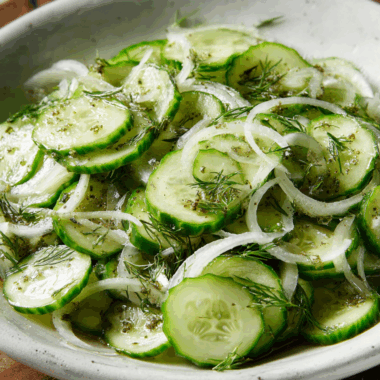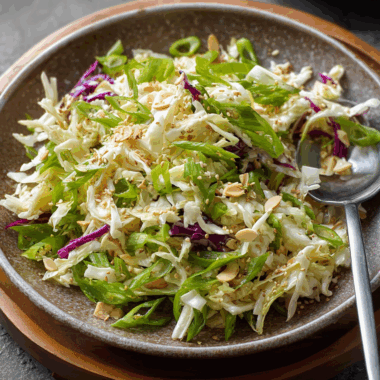Tender, smoky, and rich with flavor, these grilled juicy chicken breasts are the ultimate answer to dry, overcooked poultry. By using a simple 30-minute brine and a touch of paprika, you’re guaranteed a moist and flavorful result every single time.
Perfect for summer cookouts or a simple weeknight dinner, this recipe delivers reliable and delicious results. With minimal ingredients and prep, it’s a go-to for anyone looking to master grilled chicken. Pair it with a fresh salad or roasted veggies for a complete meal that’s as wholesome as it is satisfying.
Full Recipe:
-
4 cups cool water
-
1/4 cup kosher salt (Diamond Crystal) or 2 tbsp Morton kosher salt
-
1.5 to 2 pounds boneless skinless chicken breasts
-
3 tablespoons extra virgin olive oil (plus more for grill)
-
1 1/2 teaspoons paprika
Directions:
-
In a large bowl, dissolve the salt into the water. Submerge the chicken breasts in the brine. Cover and refrigerate for 30 minutes.
-
Prepare your grill for two-zone cooking—one side hot for searing and the other cooler for finishing.
-
Remove the chicken from the brine and pat dry with paper towels. Coat evenly with olive oil and sprinkle paprika all over.
-
Brush the grill grates with olive oil. Place the chicken on the hot side and grill until grill marks appear (about 3–4 minutes).
-
Flip the chicken and move to the cooler side of the grill. Cover and cook until the internal temperature reaches 155°F (about 5–7 minutes more).
-
Remove from the grill and tent with foil. Let rest for 5–10 minutes before slicing.
Prep Time: 5 minutes (plus 30 minutes brine) / Cooking Time: 10–12 minutes / Total Time: 45–50 minutes
Kcal: 373 kcal / Servings: 4 servings
The Secret to Perfectly Juicy Grilled Chicken Breasts
Grilled boneless, skinless chicken breasts have a reputation for being tricky to master. Without the protective fat of skin or the insulation from bones, this lean protein can go from tender to dry and rubbery in a matter of minutes. But with the right techniques, it transforms into a mouthwatering main dish that’s flavorful, juicy, and incredibly versatile.
The secret weapon? A quick brine. This simple step can completely change the way you grill chicken forever. While marinades offer flavor, brining changes the texture and moisture content of the meat, helping it stay juicy even under high heat.
Why Boneless, Skinless Chicken Breasts Are Challenging to Grill
Many home cooks love chicken breasts because they’re low in fat, high in protein, and quick to cook. However, that same lack of fat makes them susceptible to drying out, especially over a hot grill. Unlike thighs, which have more connective tissue and fat to retain moisture, chicken breasts need a little help.
Boneless, skinless breasts are particularly vulnerable because they don’t have any built-in barriers to shield them from the grill’s intense heat. If you’ve ever served grilled chicken that was tough, stringy, or dry—chances are the heat was too high or the meat wasn’t prepared properly before hitting the grill.
The Brining Advantage: Moisture and Flavor Enhancement
Brining is one of the simplest and most effective culinary tricks to guarantee moist chicken. In this recipe, the chicken is soaked in a salt-water solution for just 30 minutes. This allows the meat to absorb water and salt, which improves its ability to retain moisture during cooking.
Unlike a marinade, which primarily flavors the surface of the meat, brining works on a molecular level. The salt in the brine alters the muscle fibers, allowing them to hold onto water more effectively. This means the chicken stays tender and juicy, even if you accidentally leave it on the grill a few minutes too long.
The best part? A 30-minute brine is all it takes. There’s no need to soak it for hours or overnight. This makes it ideal for busy weeknights or spontaneous weekend grilling.
Paprika and Olive Oil: Simple Seasoning That Works
After the brine, the chicken is patted dry and coated with a mixture of olive oil and paprika. These two ingredients may sound modest, but they do a lot of heavy lifting.
The olive oil not only adds subtle flavor and richness but also prevents the chicken from sticking to the grill. It helps form that signature golden-brown crust that makes grilled food so appealing.
Paprika brings both color and taste. It lends a beautiful reddish hue to the chicken while also adding mild smokiness and warmth. You can opt for sweet, smoked, or hot paprika depending on your flavor preferences.
This minimalist seasoning approach allows the natural flavor of the chicken to shine through. It’s also a great base for other seasoning layers if you want to build complexity—add garlic powder, lemon zest, thyme, or chili flakes if desired.
Mastering the Two-Zone Grilling Technique
One of the keys to perfect grilled chicken is using a two-zone heat setup. This simply means arranging your grill so one side is hotter than the other.
Start the chicken on the hot side to get those nice sear marks and locked-in juices. Then move it to the cooler side to finish cooking gently. This prevents the exterior from burning while the inside catches up.
If you’re using a gas grill, just turn one burner to high and leave the other on low. For charcoal, pile the coals to one side and leave the other side relatively bare. You’ll end up with one direct-heat area and one indirect-heat area.
By using this technique, you’ll have much more control over your cooking and a much better result. It’s the difference between chicken that’s grilled and chicken that’s perfected.
Using a Meat Thermometer for Foolproof Results
To really dial in your doneness, use a meat thermometer. It’s the easiest way to ensure your chicken is safe to eat without overcooking it.
The ideal internal temperature for chicken breasts is 155°F (68°C) when pulled off the grill. The chicken will continue to cook as it rests, rising to a safe 160–165°F (71–74°C). This carryover cooking is crucial—remove the chicken too late, and it’ll end up dry; remove it too early, and it may be underdone.
A thermometer removes all the guesswork, allowing you to confidently grill chicken to juicy perfection every time.
Resting Is Not Optional
Once off the grill, resist the urge to slice into the chicken right away. Resting the meat for 5 to 10 minutes under a loose tent of foil allows the juices to redistribute evenly throughout the meat. Skip this step, and those precious juices will run out onto your cutting board instead of staying in the chicken.
This final stage may seem minor, but it’s essential for keeping your grilled chicken moist and flavorful. You’ve done the hard work—don’t skip the last step that seals the deal.
Serving Suggestions: Make It a Meal
This grilled chicken is a blank canvas that can be served in countless ways:
-
Slice it over a green salad for a light and healthy lunch.
-
Serve it with grilled vegetables and couscous or quinoa for a balanced dinner.
-
Use it in wraps, sandwiches, or chicken tacos for a portable meal.
-
Chop it into cubes and toss it into a pasta dish or grain bowl.
Since the seasoning is simple and flexible, it pairs well with everything from Mediterranean flavors to BBQ or even Thai peanut sauces. It’s the kind of recipe that fits into any menu or occasion.
Meal Prep-Friendly and Versatile
Another reason to love this recipe? It’s fantastic for meal prep. Make a batch on Sunday, store the cooked chicken in airtight containers in the fridge, and you’ll have easy protein ready to go all week long.
Use it in lunchboxes, reheat for quick dinners, or even enjoy it cold in a wrap or salad. The brined and grilled method ensures it stays juicy even days later, unlike plain chicken breast that dries out quickly.
Who This Recipe Is Perfect For
Whether you’re a beginner cook or a seasoned griller, this recipe is designed for success. It’s approachable for novices and still appreciated by experts who understand the value of a well-executed classic.
It’s also great for those following dietary plans like low-carb, keto, Whole30, or paleo. With no added sugar or processed ingredients, this recipe fits a variety of nutritional goals while delivering maximum satisfaction.
Conclusion: Grilled Chicken That Never Disappoints
This recipe proves that grilling boneless, skinless chicken breasts doesn’t have to result in dry, uninspired meat. With a quick brine, a dash of seasoning, and smart grilling techniques, you can enjoy moist, flavorful chicken every single time.
It’s a back-pocket recipe that belongs in every cook’s rotation—not just for the ease of preparation but for the consistent, delicious results it delivers. Whether you’re cooking for a family dinner, a summer BBQ, or a week’s worth of lunches, this grilled chicken recipe delivers every time.
Master this simple method, and you’ll never fear grilling chicken breasts again.








